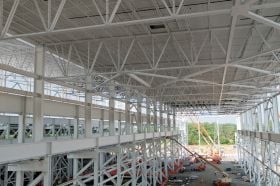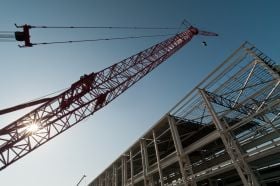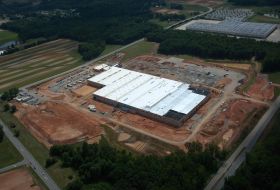Southern Attraction: Numerous Advantages Driving Major Manufacturers to the Southern USA
From its innate qualities like land availability and large labor pools to the aggressive recruitment efforts of southern state governments, it seems the South is offering just the right ingredients to entice manufacturing facilities and distribution centers its way time and time again.

It’s the Simple Things…Labor, Land, and Location Fueling Migration of Business/Industry to the South

Siemens Energy, Inc., Charlotte, N.C.
A great southern migration has been taking place over the past two decades, especially in the world of manufacturing plant construction. Companies across the globe are clearly taking advantage of the South’s enticing business landscape, and the trend seems to be increasing.
From Texas to Tennessee to the Carolinas, southern states have been increasingly successful in attracting top-tier manufacturers, distributors and other corporations, creating jobs and fueling southern economies. According to the Census Bureau, non-residential construction spending has been on the rise in the South since the early ‘90s, and the gap between the South and the rest of the nation is widening. In 2009, $31.2 billion was spent on manufacturing construction projects in the South, compared to $15 billion in the Midwest, $7.2 billion in the West and $4.5 billion in the Northeast.
While it’s tempting to immediately credit economic development efforts and state government incentive programs, there are other more simple explanations for why the South is luring so many—the first of which revolves around the migration of America’s population to the South.
America’s Population Heads South

Siemens Energy, Inc. in Charlotte boasts the largest total crane capacity of any new construction project currently underway in the U.S.
“In the late ’50s and early ’60s, people started migrating from the Midwest and the Northeast back down to the South for the quality of life, and also to get back to their traditional family roots,” said Doug Berry, vice president of economic development, Cleveland-Bradley (Tennessee) Chamber of Commerce. “That began forcing manufacturers to look at labor pools and shift close to market and transportation, causing an increase (in the migration of business and industry to the south). To me, that’s pretty much the reason why the South has reemerged.”
The 2010 Census supports Berry’s assessment. From 2000 to 2010, the South led the nation in population growth with a 14.3 percent increase, and the West was not far behind with a 13.8 percent increase. But the Midwest and the Northeast grew by much smaller margins—just 3.9 percent and 3.2 percent respectively. North Carolina moved up one spot to the tenth most populous state, replacing New Jersey, which fell from ninth in 2000 to eleventh in 2010.
Location is Key for Attracting Manufacturers
Beyond the large labor pool, the availability of land and real estate in the South provides another good reason for business and industry to locate there. Mike Mullis is the owner and president of J.M. Mullis, Inc., which provides project location and expansion services to companies across the globe. In this capacity, Mullis has helped hundreds of companies in their quest to find just the right location for new plant construction and expansion. For them, location is key.
“If you take the New England states and the Middle Atlantic states for example, those states, to a significant part, do not have the real estate—being large sites and infrastructure—to service major projects,” explained Mullis. “It goes back many, many years to the growth of those regions from a residential standpoint, a commercial standpoint, and/or the vacancy of facilities that have been left. Whereas the southern states have a lot of real estate and infrastructure capability.”

The 102-acre Caterpillar site in Winston-Salem, N.C.
Southern locations tend to also have wide access to markets, supply, and transportation outlets—a highly sought-after characteristic for businesses looking for quick product-to-market cycles. The South features numerous ports, railways, interstates and airports, many of which intersect or are located
near one another.
“I think that North Carolina has always had a bit of a competitive advantage because of its geographical location,” said Bob leak, president of Winston-Salem Business, Inc., an economic development organization that promotes the Winston-Salem area. “And the companies that mostly locate here are doing so because of the access to the market or access to supply.”
Aggressive Industry Recruitment Bring Jobs
While these simple explanations are significant to those choosing to locate in the South, make no mistake, the aggressive and intelligent efforts of state governments and economic development officials have been vital to the growth of business and industry in the South.
“Let’s just say the southeastern states continue to do a really good job at industry recruitment and retention,” said Mullis. “They are ready to step up within their capability to do what they need to do to bring jobs.”
For a printer friendly version of all of our GrayWay articles, click here.
- Category:
- Corporate News
Some opinions expressed in this article may be those of a contributing author and not necessarily Gray.
Related News & Insights
Food & Beverage
Gray Project Receives Manufacturing Innovation Award
Corporate News, Industry
December 04, 2024NexGen Spotlight: In Pursuit of Excellence
Stories
Advanced Technology, Automation & Controls
Four Use Cases for AI's Growing Role in Manufacturing
Industry
November 25, 2024